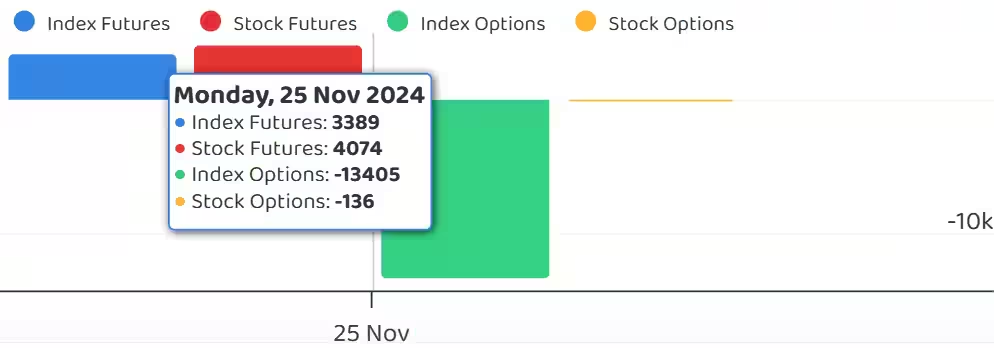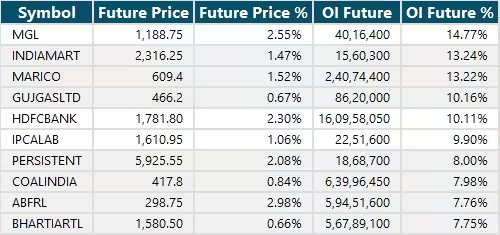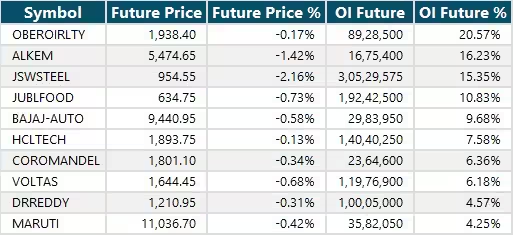26 Nov , 2024 By : Debdeep Gupta

Nifty Trade Setup
The Nifty 50 extended its strong northward journey for another session, posting a more than one percent rally on November 25 and entering the upper band of the Bollinger Bands, indicating a positive trend. The index may experience some volatility due to the F&O expiry week, but the overall trend now seems positive. It is likely to march towards the 24,400-24,500 range in the upcoming sessions, with support placed at the 24,000 mark, followed by the 23,950-23,850 support zone, according to experts.
Here are 15 data points we have collated to help you spot profitable trades:
1) Key Levels For The Nifty 50 (24,222)
Resistance based on pivot points: 24,319, 24,370, and 24,453
Support based on pivot points: 24,154, 24,103, and 24,020
Special Formation: The Nifty 50 formed a small bearish candlestick pattern with both upper and lower shadows, resembling a High Wave pattern on the daily charts, indicating indecision, especially after the 1,000-point rally in the last two trading sessions. The index climbed above the 20-day EMA (Exponential Moving Average) and entered the upper band of the Bollinger Bands. Meanwhile, the momentum indicator RSI (Relative Strength Index) at 51 maintained a positive crossover and entered the upper band, which is a positive sign.
2) Key Levels For The Bank Nifty
Resistance based on pivot points: 52,317, 52,448, and 52661
Support based on pivot points: 51,892, 51,760, and 51,547
Resistance based on Fibonacci retracement: 52,679, 53,458
Support based on Fibonacci retracement: 51,262, 50,266
Special Formation: The Bank Nifty outperformed the benchmark Nifty, rising 2.1 percent to 52,208, and formed a bullish candlestick pattern on the daily charts. The index not only climbed above all key moving averages but also traded above the 50 percent Fibonacci retracement (from the record high in September to the November low), with robust volumes, signaling a healthy trend. Additionally, there was a positive crossover in the RSI, which reached 56.7.
3) Nifty Call Options Data
According to the monthly options data, the 25,000 strike holds the maximum Call open interest (with 1.03 crore contracts). This level can act as a key resistance level for the Nifty in the short term. It was followed by the 24,500 strike (77.33 lakh contracts), and the 24,300 strike (72.84 lakh contracts).
Maximum Call writing was observed at the 25,200 strike, which saw an addition of 36.59 lakh contracts, followed by the 24,300 and 25,000 strikes, which added 34.78 lakh and 29.66 lakh contracts, respectively, while the maximum Call unwinding was seen at the 24,000 strike, which shed 20.36 lakh contracts, followed by the 23,900 and 23,800 strikes, which shed 15.35 lakh and 13.32 lakh contracts, respectively.
4) Nifty Put Options Data
On the Put side, the maximum open interest was seen at the 23,000 strike (with 84.6 lakh contracts), which can act as a key support level for the Nifty. It was followed by the 23,500 strike (82.45 lakh contracts), and the 24,300 strike (59.39 lakh contracts).
The maximum Put writing was placed at the 24,300 strike, which saw an addition of 46.64 lakh contracts, followed by the 24,200, and 24,000 strikes, with 29.07 lakh, and 25.35 lakh contracts added, respectively, while the maximum Put unwinding was seen at the 22,950 strike, which shed 4.38 lakh contracts, followed by the 23,050 and 23,300 strikes which shed 4.14 lakh and 3.44 lakh contracts, respectively.
5) Bank Nifty Call Options Data
According to the monthly options data, the 54,000 strike holds the maximum Call open interest, with 32.81 lakh contracts. This can act as a key resistance level for the index in the short term. It was followed by the 53,000 strike (24.2 lakh contracts) and the 54,500 strike (24.31 lakh contracts).
Maximum Call writing was visible at the 54,500 strike (with the addition of 13.28 lakh contracts), followed by the 52,200 strike (9.59 lakh contracts) and the 52,600 strike (7.69 lakh contracts), while the maximum Call unwinding was seen at the 51,500 strike, which shed 11.99 lakh contracts, followed by the 51,000 and 52,000 strikes, which shed 7.54 lakh and 4.52 lakh contracts, respectively.
6) Bank Nifty Put Options Data
On the Put side, the maximum open interest was seen at the 50,000 strike (with 38.34 lakh contracts), which can act as a key support level for the index. This was followed by the 49,500 strike (26.85 lakh contracts) and the 51,000 strike (24.43 lakh contracts).
The maximum Put writing was observed at the 50,000 strikes (which added 18.56 lakh contracts), followed by the 51,500 strikes (13.28 lakh contracts) and the 52,000 strikes (12.31 lakh contracts), while the maximum Put unwinding was seen at the 54,000 strikes, which shed 29,820 contracts, followed by the 53,000 and 53,500 strikes, which shed 29,280 and 23,580 contracts, respectively.
7) Funds Flow (Rs crore)

8) Put-Call Ratio
The Nifty Put-Call ratio (PCR), which indicates the mood of the market, fell to 1.11 on November 25, from the 1.19 level in the previous session.
The increasing PCR, or being higher than 0.7 or surpassing 1, means traders are selling more Put options than Call options, which generally indicates the firming up of a bullish sentiment in the market. If the ratio falls below 0.7 or moves towards 0.5, then it indicates selling in Calls is higher than selling in Puts, reflecting a bearish mood in the market.
9) India VIX
The India VIX, the fear index, snapped its four-day winning streak and fell by 4.94 percent to 15.30 from 16.10 levels, but it is still in the higher zones. Bulls may gain further strength if the VIX drops decisively below the 14 mark.
10) Long Build-up (75 Stocks)
A long build-up was seen in 75 stocks. An increase in open interest (OI) and price indicates a build-up of long positions.

11) Long Unwinding (4 Stocks)
4 stocks saw a decline in open interest (OI) along with a fall in price, indicating long unwinding.

12) Short Build-up (20 Stocks)
20 stocks saw an increase in OI along with a fall in price, indicating a build-up of short positions.

13) Short-Covering (83 Stocks)
83 stocks saw short-covering, meaning a decrease in OI, along with a price increase.

14) High Delivery Trades
Here are the stocks that saw a high share of delivery trades. A high share of delivery reflects investing (as opposed to trading) interest in a stock.

15) Stocks Under F&O Ban
Securities banned under the F&O segment include companies where derivative contracts cross 95 percent of the market-wide position limit.
Stocks added to F&O ban: Nil
Stocks retained in F&O ban: Aarti Industries, GNFC, Granules India
Stocks removed from F&O ban: Adani Enterprises, Hindustan Copper, Indraprastha Gas, National Aluminium Company
0 Comment